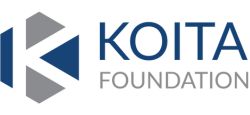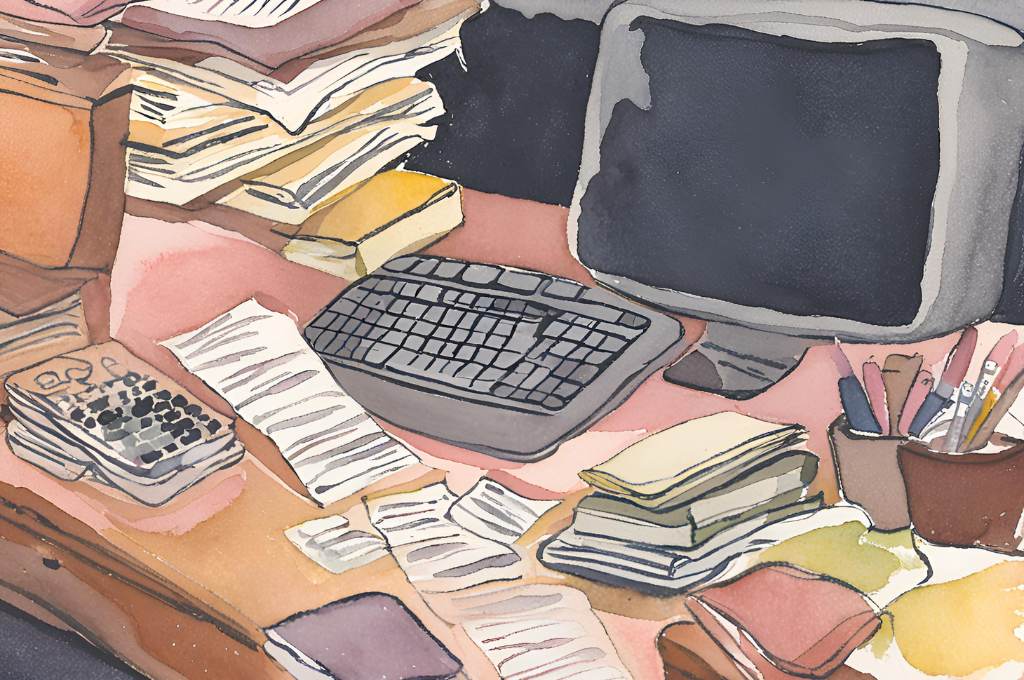Partnerships between nonprofits and government can take many forms. One of the emerging themes in these collaborations is the use or integration of technology in government systems. But what does this look like? What are the barriers to it, and the factors that enable it? To answer these questions, we spoke with Madhi Foundation—a nonprofit that has been working closely with the Government of Tamil Nadu in the realm of public education.
Based in Chennai, Madhi Foundation works across Tamil Nadu to enable the provision of equitable, high-quality foundational learning. It does so by collaborating with both government and parent communities. Since 2022, Madhi has partnered with Tamil Nadu’s Department of School Education as part of Ennum Ezhuthum—the state’s five-year programme to improve literacy and numeracy—on systemic reforms related to curriculum, pedagogic practices, teacher training, and assessments. Tech, particularly the kind designed for data collection, plays a critical role in the organisation’s partnership with the government. Merlia Shaukath, Madhi’s CEO, says, “With systemic change, tech and data go hand in hand, because you need to understand the intricate details of what’s happening on the ground. And while data may not give you the full picture, it does give you an indication of the direction in which the system is heading. It’s also important for a system as complex as India’s public education system to both contextualise and standardise some practices. And tech plays an enormous role with respect to achieving both scale and quality.”
In collaboration with the Tamil Nadu Department of School Education, Madhi developed the Palli Paarvai app, Ennum Ezhuthum app, and Payarchi Paarvai app for the public education system in Tamil Nadu. The Palli Paarvai app is used to observe classroom processes—teaching quality, compliance with teaching-related best practices, and so on. The Ennum Ezhuthum app is used by teachers to administer formative and summative assessments, and it presents the teacher with both aggregated and disaggregated data on student performance. Lastly, the Payarchi Paarvai app is used to train teachers and also capture data on the efficacy of the training process itself. It serves to standardise the delivery of training across all levels and reduce transmission loss, as training is generally cascaded through several levels in large public education systems like Tamil Nadu.
The use of these platforms has enabled Madhi to reach 65,000 teachers and approximately 15 lakh children across the state of Tamil Nadu. Although tech has been central to Madhi’s work with the government, the intervention had its own set of adoption issues. The organisation had to navigate a few challenges in the process of nurturing its collaboration with the state machinery.

Trial and error
1. Dealing with legacy systems
Building tech for and with the government can be a complex endeavour. When the partnership first began, Madhi had to work with the legacy systems that were already in place. Merlia says, “Often in tech, it is easier to just build from scratch than to build on something, especially if it is an older technology. But you can’t just ask the government to discard what they’re already using. You have to think strategically to figure out a way to make it work.”
According to Srivathsan Ramaswamy, Madhi’s CPO, the organisation’s vision was to establish an OMR (optical mark recognition)-based scanning and assessment system to efficiently collate the data acquired through the teacher and student assessments. However, the system used by the government did not support this functionality, which meant that Madhi had to invest significant time into the R&D required to develop the feature within the framework that was in use. He also noted that the complex computations required to process the crores of rows of assessment data—that they collect weekly to understand learning outcomes and patterns within them—were not supported by the state’s existing framework. He adds, “We spent a good one year in R&D. Today, the state is in a place where they are ready to build a more robust data architecture, and they now see the merit in this investment because we spent five to six years working within their framework and deriving value from it.”
Srivathsan thus believes that showing proof of concept in a constrained environment is what allows policymakers to make more bold investments in building tech infrastructure that is more future-proof.
2. Ensuring contextual sensitivity
“You need to build tech with a lot of sensitivity when working with government systems,” says Merlia. For instance, it was found that the teacher observation mechanism within the public school system needed improvement. The Palli Paarvai app was designed to enable teacher observation, while also ensuring that this observation is conducted appropriately. For instance, the app informs observers that they are to do the observation from the back of the classroom and are to remain silent and respect the classroom environment while doing so.
“Similarly, in an urban environment, the internet might seem ubiquitous. But many schools in rural Tamil Nadu still do not have access to the internet. So it was critical for us to ensure that the platform was functional offline as well,” says Merlia. Thus, contextual sensitivity is in service of each stakeholder’s needs, as well as that of the larger problem the organisation is trying to solve.
3. Managing political will
Although the COVID-19 pandemic accelerated the adoption of tech interventions, Merlia notes that it still takes significant political will to implement such reforms. “Even though we are a nonprofit, there were several questions raised about a private entity getting involved in a public system. ‘What is their agenda?’ ‘What will they do with the data that they collect?’”
Srivathsan notes that organisations trying to scale their solutions as a product to the government have an immense responsibility to maintain certain ethical standards. He argues that the best way to address mistrust from the state is to leverage the state’s infrastructure to deliver value. “All the work that we have done rests on the state’s servers. It operates within the state environment, which means that Madhi does not own any of the data. In fact, we have set up an SOP with the department for data extraction, which we follow to get even a single row of data from them. And the reason we do it this way is to build trust. It is slow, and it isn’t convenient. But it is the right way to do things.” Following these processes has helped the state machinery build its own data-sharing muscle and has instilled the confidence in them that the nonprofit is in it for the right reasons.
Merlia adds, “We were also very fortunate to work with school education officers who had a progressive vision for technology. They do not look at technology as a leveller, because it isn’t. Neither do they look at it as something that exacerbates inequality. So this strong sense of balance has enabled a reform of this magnitude to move forward.” Receiving the backing of these government officers served to rally stakeholders together rather than force-feed change to them.

What Madhi learned
Through trial and error, the organisation was also left with a few key takeaways on the utilisation of tech in one’s work with state machinery.
1. Focus on consensus building
There will always be resistance to change, which is why it is important to build consensus when working at scale. Merlia notes, “Consensus building is the main differentiator between tech that endures in a large system and tech that is just a passing fad.” Regular consultations were held with various stakeholders—teachers, block, district, and state officers—which helped them view Madhi as an entity that has their interests in mind, while simultaneously giving the organisation a better sense of the needs of each stakeholder group.
Merlia elaborates, “You don’t go in with a saviour complex, thinking that you know how to solve everything. Everybody’s voice was genuinely taken into account. We provided space for people to report bugs and feedback every time a new version of the platform was launched. It would have been very easy for us to say, ‘Oh, this teacher or this block is not using the app.’ But it was important for us to go to them and understand why they weren’t using it, and ask them what we could do to make the experience better for them.”
2. Use data judiciously
Merlia emphasises that when working with government systems, it is important not to react impulsively to data in a bid to swiftly remedy problems. “It’s very tempting to look at data and think it’s time to start pulling up teachers for their poor performance. But this will make you lose the consensus you’ve built and the momentum you’ve gained. You put people first, and be sensitive to the fact that using technology can be quite daunting for those unfamiliar with it.” Madhi’s approach was to measure the success of the reform in various, gradual steps. First, they looked at adoption, checking how many teachers were using the app on a daily basis and whether they were using it correctly. After acknowledging/rewarding those who were and digging deeper into why others weren’t, they began to look at whether appropriate processes were being followed and if the requisite materials were being used in class. Only after this did they start looking at outcomes. “The biggest fear is that of being reprimanded for poor performance. So the department tried to build trust and make the teachers view technology as something that’ll make their life easier, and very slowly began to introduce accountability measures,” says Merlia.
3. Understand the system before building for it
Recalling a few words of wisdom offered by an officer that Madhi worked with closely, Merlia stressed on the importance of listening closely when building tech for the government. “At one of our earliest meetings with this officer, we were doing the typical pitch mentioning how our intervention is research-based and incorporates best practices. But he responded, ‘If I say I have a headache, a nonprofit will come in and try to convince me that I actually have a stomach issue and that their panacea will help me with that. Very few have the patience to build after understanding what my problem really is.’ So, I would say that if you’re building for the government, you need to take the time to understand the problem and define it with honesty, not in a manner that makes your solution relevant.”
Fostering this understanding necessitates spending time on the ground with the potential users of your intervention to comprehend the pain points in the system. “Go to the most under-resourced school and the districts that are performing poorly on various indices, and see if what you’re building will work there,” Merlia says.
What lies ahead
The organisation has already seen shifts in government behaviour and the manner in which problem statements are articulated. For example, instead of hearing that teachers are not incentivised to work and don’t do any work, they now hear that the teachers are better equipped to use learning materials but may require more support to drive core learning outcomes in their classrooms. As the understanding of students’ and teachers’ needs evolves, Madhi hopes that the administrative cadre responds to these needs based on data rather than generalisations.
A critical aspect of tech adoption is recognising the value that the data and insights generated by tech can drive. Having worked on first-order problems such as whether classroom assessments are being conducted regularly and in the right way, Madhi is now looking at how efficiently the data generated from these assessments is being utilised in review and governance meetings. Srivathsan adds, “We have now started building tools for these second-order problems because we know that they will require tech and data to be driven effectively, given the scale at which the state government is operating.”
—
About Merlia and Srivathsan
Merlia Shaukath, founder and CEO of Madhi Foundation, is an advocate for educational equity, focused on eradicating India’s foundational learning crisis. With degrees from Oxford and the London School of Economics, she believes early childhood education is the key to addressing social inequity. Her leadership at Madhi has been recognised globally, earning her fellowships with Mulago, Ashoka, and others. Before Madhi, Merlia led various verticals at Teach for India and worked in senior policy consulting roles with state governments and international nonprofits, ensuring policy aligns with impactful implementation.
Srivathsan Ramaswamy, co-founder and CPO of Madhi Foundation, holds degrees from the London School of Economics and SRM University. With nine years in the development sector, his experience spans curriculum development, programme design, and education policy. After starting as a curriculum specialist and teaching fellow with Teach for India, Srivathsan joined Madhi in 2018. He led SCERT collaborations to improve textbook quality and managed the Foundational Learning Improvement Programme, impacting 37,000 schools. Now, he focuses on data-driven strategies to enhance learning outcomes at Madhi.
—
Know more
- Read this article on strategies for nonprofits working with government.
- Read this article to learn about the right and wrong types of data for your nonprofit.







